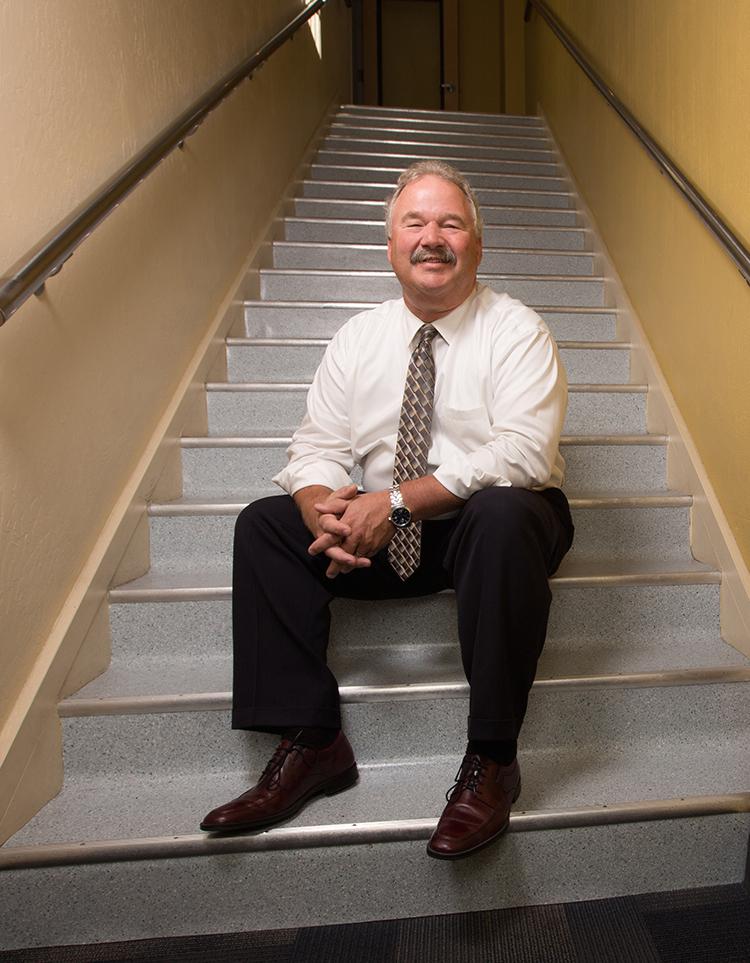Adrian Borg, the CEO of Borg Fence and Decks, needed to find an answer to his ballooning workers’ comp costs. The company had been seeing regular premium increases of 10 to 15 percent annually, even though his claim numbers were dropping. He’d been through five insurance carriers, and there seemed to be no correlation between his dwindling claims and his rising premiums.
In November 2011, facing another huge premium increase, he went shopping for yet another carrier. But this time, the best quote he could get for the following year was 40-percent higher than what he’d been paying. That alone would tip his company into the red.
Borg’s experience is far from unique. Average workers’ comp premiums in California rose from $2.10 per $100 of payroll in 2009 to $2.97 per $100 for the first quarter of 2014, a 41-percent increase. California’s rates are markedly higher than those charged in other states, and in 2013, the state’s premiums constituted fully a quarter of the U.S. total, according to a report released earlier this year by the state Workers’ Compensation Insurance Rating Bureau.
At least one area firm has been caught short in a failed captive. In 2009, a 250-member self-insured workers’ comp captive called Contractors Access Program went belly up. When it did, it left liabilities of more than $20 million for its members
So Borg’s broker turned him on to another solution: ditching his carrier and partnering with other firms to run his own provider. The arrangement is known as captive insurance, and a growing number of large companies are using the option to take control of costs.
More Control, Greater Risk
Nationwide, captives are growing fast. In 2012, 18 new U.S. group captives were formed, the highest level since 2007. Buying into a captive puts risks and rewards in the hands of business owners. Only a few very large companies (those with loss amounts of more than a million dollars a year) can afford to form solo captives, says Alex Michon of Aon Risk Solutions, a risk management and finance consultant. In a solo, the firm creates the captive, pays itself premiums, pays out claims and hires contractors like claims adjusters, lawyers and medical providers.
But mid-sized companies like Lawson Mechanical Contractors, a Sacramento construction firm that insures about 200 employees, aren’t large enough to go it alone. So they buy into a group with other companies whose claims histories and safety practices they’ve carefully vetted.
Lawson’s vice president and CFO, Rod Barbour, says the group captive it joined three years ago has about 30 members, and its premium is split three ways. One part goes to a reserve fund that pays Lawson’s own claims, another to a group reserve that starts paying if Lawson’s claims for a year exceed its own reserve, and a third portion is paid to a reinsurer that covers claim amounts that exceed the two reserve funds.
That means if members keep their claims low, they save money on premiums, and participating companies typically get about 60 percent of their premiums refunded each year if their group keeps claims at or below the norm, says Owen Taylor, CEO of Owen-Dunn Insurance Services.
Borg joined his captive group two years ago and is still building up the required reserve minimum, so he isn’t yet getting a refund on his $320,000 annual premium. But even without it, he says the captive has paid off because his premium hasn’t budged. The last time he checked what he’d be paying on the open market, the lowest quote he found was $430,000.
Captives experts say contractors — the claims adjusters, attorneys, and medical specialists — can also work more efficiently within a captive because they can specialize in handling industry-specific claims. David McMahon is an attorney with Barger & Wolen in San Francisco and handles cases involving captives. He notes that specialization means captives can process claims faster, which improves relationships with employees and unions. Michon also says such specialization makes a big difference in the quality of work that defense attorneys offer, in part because they become adept in litigating questionable claims within a narrow industry area.
Captives Aren’t for Everyone
But there are downsides to captives, too, starting with the fact that firms have to be at least mid-sized (the lowest entrance premium that Taylor has heard of is $100,000 a year, and some require a minimum of $500,000). And companies with a poor claims history don’t get in either. During the application process, a captive’s actuaries typically scrutinize five years worth of claims data.
Joining a captive also means that participating businesses are forced to invest resources in safety programs. Scrutiny of member performance is strict. Those who have a spike in claims get a warning, but if claims persist, members can be put on a watch list or voted out. “We don’t want [companies] that are high risk in the group,” Borg says. That laser focus on safety may not work for companies whose owners think spending on accident prevention diverts resources away from the rest of their business, Taylor says.
Businesses involved in captives have to invest staff time in other ways as well. The captive group is responsible for governance decisions, so Barbour serves on his captive’s investment management committee. And in Borg’s captive, members are required to attend biannual safety meetings.
Rod Barbour is the vice president and CFO of Lawson Mechanical
Contractors. His company joined a captive insurance group three
years ago and is now in the bottom quartile among its industry
peers for the total amount it pays for workers’ comp.

Buying into a captive also requires cash on hand. The initial stock purchase runs from $25,000 to $36,000, and companies have to put up collateral, which runs from 10 to 30 percent of the company’s annual premium.
Businesses can’t view a captive as a short-term experiment. If a company leaves a captive, it takes five to seven years to get their money out, Taylor says. The delay happens because all outstanding claims have to be fully resolved before money can be released. Plus, after they leave, companies can find it hard to get coverage from regular insurance carriers because of legal requirements that carriers cover some legacy claims, says Michon. All of that means companies going back into the regular market may have to get coverage from the quasi-public State Compensation Insurance Fund for a year or two.
Perhaps most serious, some captives may be reluctant to share important financial data with prospective members. That’s especially true for the captives that need the most scrutiny. Thomas Jones, a Chicago attorney whose practice focuses on captives, told U.S. Captive Magazine this year that the captive industry itself has had problems collecting information on its performance; captives that aren’t doing well often don’t want to share their data, Jones told the magazine.
Michon says he would never recommend that a client even look at a captive that’s not open with its financials. That’s because a captive’s success isn’t guaranteed. “There are some incredibly stable shared captives out there,” Michon says. “There are also a ton of shared captives that are smaller and have a higher likelihood of going into receivership.”
At least one area firm has been caught short in a failed captive. In 2009, a 250-member self-insured workers’ comp captive called Contractors Access Program went belly up. When it did, it left liabilities of more than $20 million for its members, who were forced by the California Department of Industrial Relations to pay the outstanding debt. Mark Tanner Construction of Truckee, for example, had to pay more than $150,000 to cover its part of the liability.
Average workers’ comp premiums in California rose from $2.10 per $100 of payroll in 2009 to $2.97 per $100 for the first quarter of 2014, a 41-percent increase.
Vetting Captives
Risks like that mean companies shopping for a captive need expert help. Michon says having a financial
specialist or broker will keep a prospective member from falling victim to a captive that knows how to manipulate data. “You have to see what confidence level they’re using because a captive can maneuver those numbers around when they run their actuarials,” he says.
Just as important is finding a captive with an active membership, says Lawson’s Barbour. Lawson interviewed representatives of four different captive carriers plus their member companies to find out their level of involvement before making his selection.
Then he had to decide whether to join a homogeneous or heterogeneous captive. The former comprises companies that work in the same industry, while members of the latter can come from widely different lines of business. Homogeneous captives allow for better sharing of best practices, but if the industry experiences a wave of similar claims (like asbestos exposure), the entire captive takes a hit. That’s not true in a heterogeneous captive since high claims in one industry can be offset by low claims in other sectors.
There is a lack of hard data comparing captive performance against the rest of the workers’ comp insurance market. U.S. Captive Magazine itself notes that the lack of access to good data on performance is a significant challenge. But anecdotally, Taylor says his clients inside captives are faring well compared with those in the regular market: “We have lumberyards in captives that pay less than $2 [per $100 of payroll] while their peers are paying more than $20,” he says. And Michon says Lawson is in the bottom quartile among its peer companies in the total amount it pays for workers’ comp.
Today, Borg says he has only one regret about joining a captive: “I wish I’d done it 10 years earlier.”
Recommended For You

Who Gets Workers’ Comp?
Things to think about when working with freelancers
I own a design firm, and we regularly employ freelance designers and photographers. Some work for us sporadically and others work for us on a regular basis. What are my responsibilities regarding liability and workers’ compensation?

Underhanded Dealings
The dark side of the “shadow economy”
Unscrupulous vendors are a small part of the so-called shadow economy – the unlicensed contractor for sure, but also a vast black market of businesses, often cash-only, working out of homes or garages, that don’t pay the taxes or licensing fees their competitors do. While profitable for the person getting away with it, this underground economy hits all of us right where it hurts – in the pocketbook.

Convenient Care
How concierge medicine is changing the health care marketplace
Think of your best friend, a friend that knows all your ticks, hobbies and vices. Now imagine this friend happens to be a doctor, and she’s your doctor.

Missing Pieces
Is California's latest disability access law causing more lawsuits?
With California leading the nation in ADA lawsuits, two years ago state legislators enacted a reform designed to thread the needle between those positions by educating more businesses about their responsibilities so they would make required access changes. Today, no one can say whether compliance has increased. But the number of ADA lawsuits has soared.



